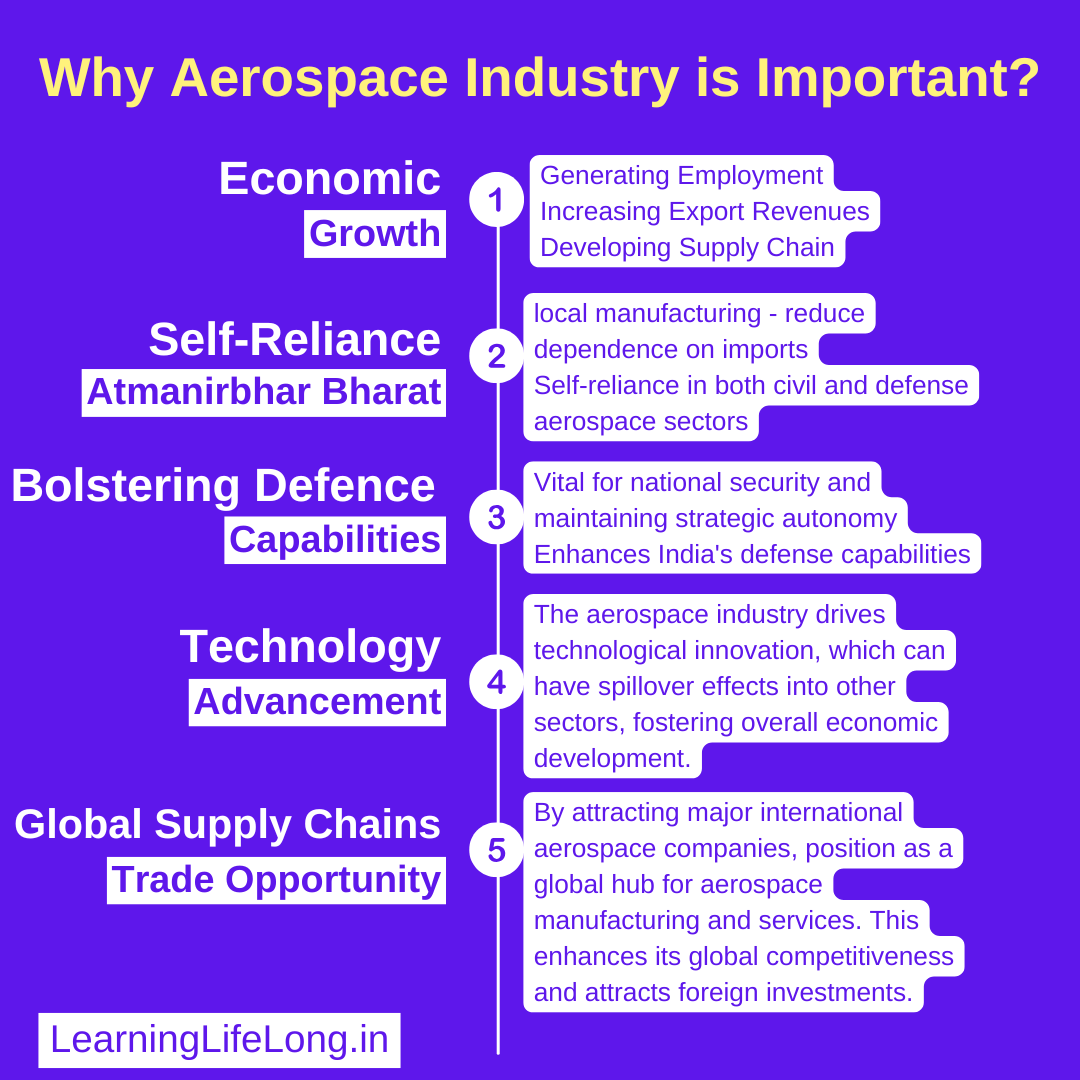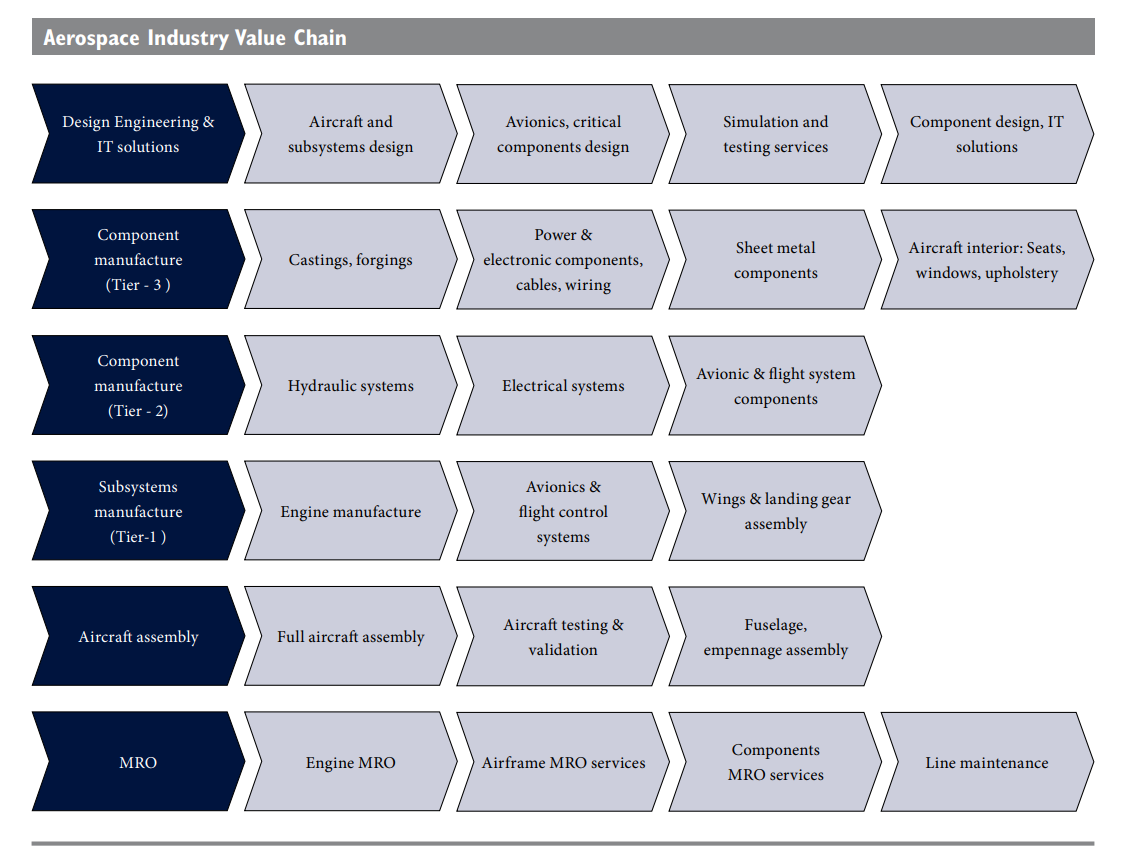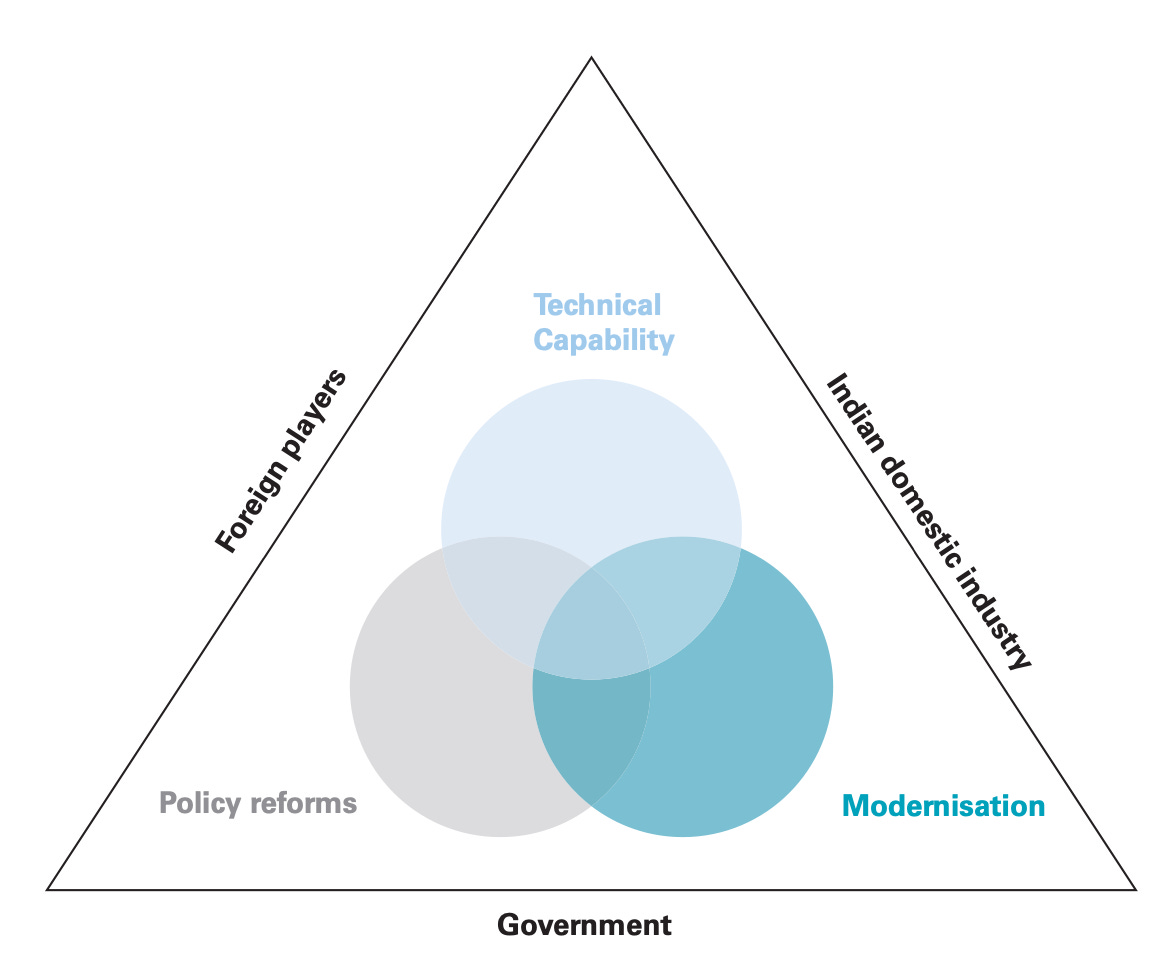Understanding Aircraft Manufacturing Ecosystem
India's Aerospace Ambitions: Harnessing Technology and Talent to Propel India's Aerospace Industry Forward
Aerospace Industry: Critical to India’s strategic and economic interests
The Aerospace Industry is critical to the strategic and economic interests of the Country. Creating Aircraft Manufacturing Ecosystem will contribute to economic growth, enhance self-reliance through local manufacturing, and boost defense capabilities. It drives technological advancements, attracts global investments, and improves regional connectivity.
Development of Aerospace Ecosystem in India
The aircraft manufacturing value chain starts with research, design, and engineering services. This is followed by high-quality component and subsystem manufacturing. Subsystems, such as engines, are complex structures requiring assembly of numerous components. The next step is the final aircraft assembly and testing. The final stage in the value chain includes MRO (maintenance, repair, and overhaul) services.
This is how the value chain looks like:
The key question is how mature the ecosystem is or more importantly in which direction are we moving and at what pace?
Let’s dig into different parts of the value chain:
Design, Engineering & IT Solutions
IMO, a moderate level of maturity is there plus a lot of work is already happening in this area. India has a good ecosystem of Global Capability Centers and ER&D firms.
Major Aerospace players are also expanding operations in India.
Tier-3 Manufacturing
We are currently a 3rd tier supplier to the industry mostly i.e. low-tech design and engineering activities. This indicates a lower level of maturity in manufacturing.Tier 1 & 2 Manufacturing:
Public sector entities like HAL and DRDO have capabilities in most parts of the value chain (barring a few critical ones like engines). However, there are significant challenges in mastering certain high-end technologies. In commercial Aircraft, the situation is dire.
One area that requires tremendous effort is Engine Development. In the commercial/civil aircraft subsystems, we are at a nascent stage.Final Aircraft Assembly
Again in defence applications, HAL engages in aircraft manufacturing and assembly. As far as civilian aircraft assembly is concerned there is a long way to go.
MRO (Maintenance, Repair, and Overhaul)
The exponentially rising civil aviation industry, therefore presents a strong case for the development of the MRO industry in India.
-NITI AAYOG Report
India is emerging as a major growth market - ordering a record number of aircraft that will need MRO (maintenance, repair, and overhaul) services
India’s aviation infrastructure has expanded exponentially, with the number of airports more than doubling from 74 to 157 over the past decade. Passenger numbers have surged from 110 million to 220 million annually, and the aircraft fleet has grown from 400 to 800, with projections to reach 1,400 within five years
-Civil Aviation Secretary
MRO is a significant cost in operating a fleet and for military aircraft, it is a strategic requirement
In India, airlines spend around 12 to 15% of their overall revenues on maintenance, which becomes the second most expensive item after fuel (45% of operating expenses).
Other factors will aid growth in MRO: Economies of Scale (as discussed above, the growing Indian aviation market can provide the volume necessary for MRO businesses to thrive), Cost Advantage (w.r.t other economies), Strategic Location (India's geographic position makes it an attractive option for aircraft operators seeking faster turnaround times).
MRO is also being pursued in Defence Aerospace.
Overall, the Indian aerospace industry is characterised by low-tech, low-cost, and low-volume activities. While the country possesses strengths in design, engineering, and MRO, it lags in high-end manufacturing and assembly, particularly in civilian aircraft. India has potential to advance its position in the value chain. What is required and in which direction are we moving?
Indian Aerospace and Defence Industry today is an interplay of modernization, reforms, and technology, with each aspect becoming instrumental in driving the growth and stability of this sector.
Significant investment in R&D, infrastructure, and skills development will be necessary to achieve this.So what’s happening on the ground...
Policy Reform continues….
Various policy measures have been taken like innovations for Defence Excellence (iDEX) program for MSMEs and start-ups, Preference to Make in India, establishment of SRIJAN (indigenization portal).
Further, reforms are being made in offset policy to encourage investment and technology through larger multipliers and FDI relaxations.The Bhartiya Vayuyan Vidheyak Bill 2024, which was passed by the Lok Sabha in August, includes provisions to regulate the design and manufacturing of aircraft, supporting the Aatmanirbhar Bharat initiative for self-reliance.
Technical Capabilities expanding….
The aerospace component space is a high-growth sector with an estimated CAGR of 28%.


In the subsequent posts, we will try to focus on some individual companies related to this sector.
To Sum Up
Aircraft manufacturing ecosystem boosts
(1) Jobs
(2) Skill level
(3) Innovation
and hence has spillover effects on other industries as well.
Aircraft manufacturing involves stringent safety regulations, precision engineering, and the integration of advanced technologies to ensure the highest standards of reliability and performance. The production process is highly specialized, with extensive testing and quality control measures, as even minor defects can have catastrophic consequences. Further, the materials, design, and technology used in aircraft are generally more advanced and specialized.
Significant efforts are being made to build the ecosystem, which will lead to opportunities in the market. We will cover some of the players in subsequent posts.Invest in yourself…. be a learning machine
These communities have helped me learn the nuances of investing. Why not check them out? - Join the community of learners.
Free course by Vivek Mashrani
Connect on X @pankajgarg_ciet
Recommended Reading
Dorsey explains how to evaluate companies within these industries by examining key financial metrics, understanding competitive advantages, and assessing industry-specific risks and opportunities.(2) The Industries of the Future
Book notes: https://x.com/pankajgarg_ciet/status/1861051553458831638 Supporting my work
This Substack will never be paywalled. I don’t want to accept voluntary payments for future unknown work.
But if you got this far, chances are you find my writing valuable. So please spread the word! Sharing, liking, and commenting all help spread the word!
Disclaimer: I am not SEBI registered. The information provided here is for educational purposes only. This is not a buy or sell advice. I will not be responsible for any of your profit/loss based on the above information. Consult your financial advisor before making any decisions.












Nice insights. Pleaae share some good companies in India in this space
India should go MRO at big scale